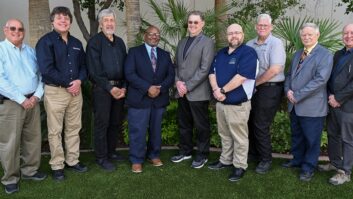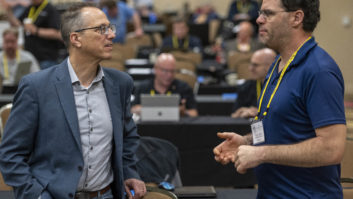Freeing up the analog broadcast spectrum is not a panacea for public safety communication problems, according to testimony on Capitol Hill.
More Spectrum Won’t Solve Public Safety Communications Problems
Freeing up the analog broadcast spectrum is not a panacea for public safety communication problems, according to testimony on Capitol Hill, reported by TV Technology magazine.
The TV Tech report continues:
A witness at a Senate Commerce Committee hearing last week said interoperability standards for public safety comms devices languished long before Hurricane Katrina or 9/11.
“The industry has not come to consensus on this for the last 15 years,” said Dereck Orr, program manager of public safety communication systems for the National Institute of Standard and Technology.
Lawmakers across the Hill have taken up the battle cry of shutting down the nation’s analog broadcast television system in the name of freeing spectrum for public safety communications. Sen. John McCain (R-Ariz.) has gone so far as to blame broadcasters for casualties on 9/11 because they were using spectrum for analog TV. John Kerry (D-Mass.) didn’t go quite as far when he recently linked communications problems during Hurricane Katrina with the DTV transition. At a House Commerce Committee hearing, also held on Thursday, spectrum was identified as the answer to public safety communications snafus.
Yet even public safety officials have said the primary problem with communications is a lack of interoperability. Depending on the types of systems used, law enforcement and firefighters in the same district may not have radio communications with emergency personnel outside their own departments. To tackle the issue, the public safety community came together with the Telecommunications Industry Association in 1990 to launch ” Project 25,” or P25. The charter of P25 was to develop technical standards for land-mobile radio system interoperability.
“Interoperability… is defined as ‘the ability to share information via voice and data signals on demand, in real time, when needed, and as authorized,'” Orr testified. “The public safety community expects this level of interoperability will be available using equipment from multiple manufacturers, that they are transparent to the user, requiring little or no special knowledge of the system, and that they are not dependent on common frequency assignment.”
Instead of additional spectrum, P25 is focused on setting standards for the eight interfaces of a land-mobile radio system, i.e., handheld-to-handheld; handheld-to-mobile; mobile-to-tower, etc. In 15 years, Orr said only one interface has met the requirements of P25. Of those remaining, he said, “Each manufacturers’ implementation of the interface is different and proprietary, thus resulting in systems that do not meet the ‘interoperability’ requirements as defined by the steering committee.”
So far, no radio systems meet the criteria of P25, he said.
Senate Commerce Committee Chairman Ted Stevens marveled that first responders couldn’t do what he could pull off piloting a small aircraft.
“I’ve never been in a plane where I couldn’t reach the ground where ever I was. Why don’t we have those kind of radios for these people?” he asked, referring to public safety personnel.
Another witness at the hearing, Dr. David Boyd, told the senior senator from Alaska that public safety communications is much more complicated than the aviation radio system. Boyd, deputy director of systems engineering and development at the Department of Homeland Security, said aviation relies on a single band with a few hundred users at a time, while public safety represents 60,000 systems used by 3 million “operators.”
“When a channel is applied in a given department,” Boyd said, “adjacent folks can’t use that channel without a lot of coordination…”
“…because the technology doesn’t exist,” Stevens replied.
“Based on what Mr. Orr says, there’s little probability that we’ll have a system that everyone can use in the near future,” he said.
Regardless of the lack of interoperable technology, Stevens said his committee was under “enormous pressure” to free up the 24 MHz of analog broadcast spectrum designated to public safety “by 2007, or even 2006.” Roughly 60 television stations are currently transmitting in that band.
More Spectrum Won’t Solve Public Safety Communications Problems
More Spectrum Won't Solve Public Safety Communications Problems












